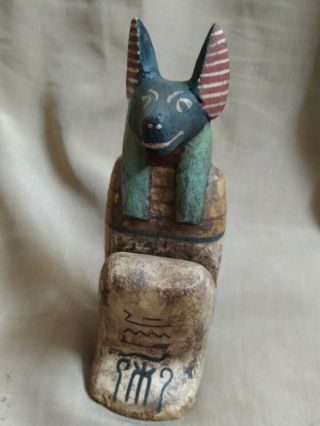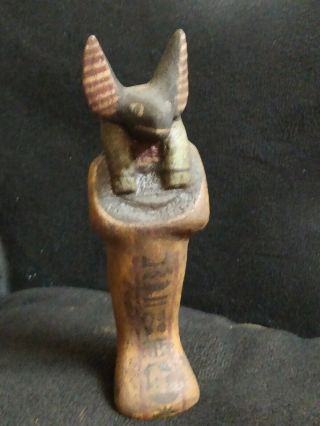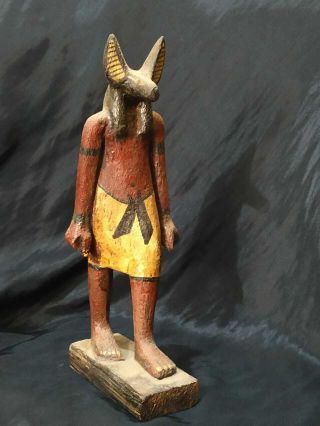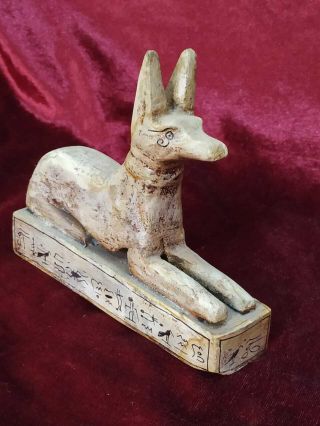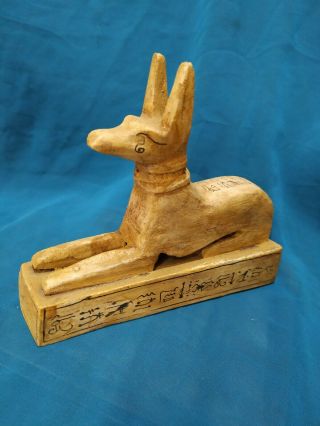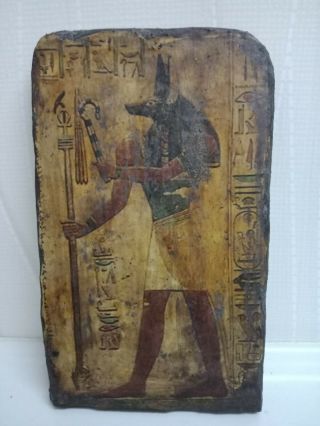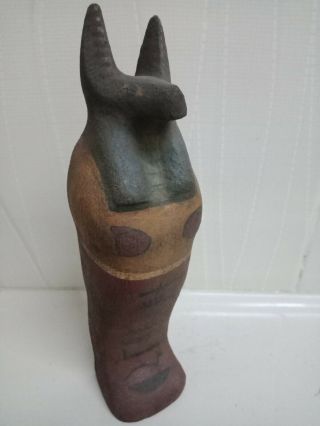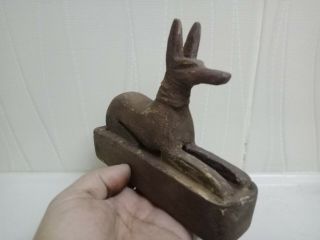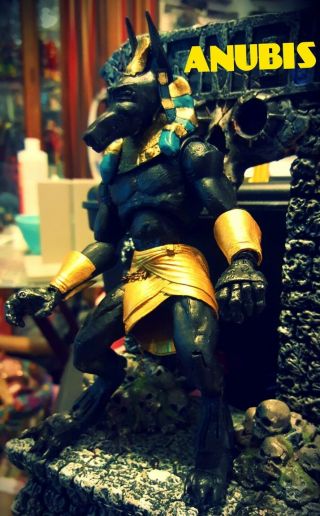Wood. Anubis The God Of The Dead And Embalming The Ancient Civilization Of Egypt
Item History & Price
| Reference Number: Avaluer:23851850 | Material: Wood |
| Provenance: Valley of the Kings West of Luxor |
Like many ancient Egyptian deities, Anubis assumed different roles in different contexts. It was depicted as a tomb protector early in the First Dynasty (c. 3100 - c. 2890 BC), and Anubis was also responsible for the embalming. By the Middle Kingdom (circa 2055 - 1650 BC) he was replaced by Osiris in his role as master of the underworld. One of his prominent roles was a guide in the afterlife. He was attending Libra events, during which "the weight of the heart"... was made, and it was determined whether the soul would be permitted to enter the realm of the dead. [2] Although he was one of the oldest deities and “one of the most mentioned deities” in the Egyptian pantheon, Anubis played no role in Egyptian mythology. [3]
Anubis is depicted in black, the color symbolizing regeneration, life, soil of the Nile, and the coloration of the corpse after mummification. Anubis is associated with his brother and a powt, another Egyptian deity depicted with a dog's head or a canid, but with gray or white fur. Historians assume that the two characters were eventually combined. [4] The female analog of Anubis is Anput. His daughter is the goddess of Snakes Kebechet, and perhaps a nation.
The name has been modified “Anubis” is the Greek pronunciation for this Egyptian deity. [5] [6] Before the arrival of the Greeks to Egypt, around the seventh century BC, the deity was known as Anpu or Inpu. The root of the name in the ancient Egyptian language means "royal child". Inpu has a root for "inp", which means "decomposition". The deity was also known as "the first of the Westerners", "the Lord of the Holy Land", "who is on his holy mountain", "the ruler of the nine arches", "the dog that swallows millions" and "the master of secrets, " who is in the place of mummification ", and “The first in the divine compartment.” [7] It is noted that the roles that he occupied also were reflected in the titles he took such as “Who is on his mountain” and “Lord of the Holy Land” and “The first Westerners” and “Who is in the place of mummification”. 8] In the Old Kingdom (around 2686 BC - 2181 BC), the usual way of writing his name in hieroglyphs consisted of jnpw sound signs followed by jackal [9] above the htp sign. [10] i n p w C6 A new form in which a jackal is found appeared on a long stand in the late era of the Old Kingdom and became popular afterward. [10] i n p w E16
Anubis is depicted in black, the color symbolizing regeneration, life, soil of the Nile, and the coloration of the corpse after mummification. Anubis is associated with his brother and a powt, another Egyptian deity depicted with a dog's head or a canid, but with gray or white fur. Historians assume that the two characters were eventually combined. [4] The female analog of Anubis is Anput. His daughter is the goddess of Snakes Kebechet, and perhaps a nation.
The name has been modified “Anubis” is the Greek pronunciation for this Egyptian deity. [5] [6] Before the arrival of the Greeks to Egypt, around the seventh century BC, the deity was known as Anpu or Inpu. The root of the name in the ancient Egyptian language means "royal child". Inpu has a root for "inp", which means "decomposition". The deity was also known as "the first of the Westerners", "the Lord of the Holy Land", "who is on his holy mountain", "the ruler of the nine arches", "the dog that swallows millions" and "the master of secrets, " who is in the place of mummification ", and “The first in the divine compartment.” [7] It is noted that the roles that he occupied also were reflected in the titles he took such as “Who is on his mountain” and “Lord of the Holy Land” and “The first Westerners” and “Who is in the place of mummification”. 8] In the Old Kingdom (around 2686 BC - 2181 BC), the usual way of writing his name in hieroglyphs consisted of jnpw sound signs followed by jackal [9] above the htp sign. [10] i n p w C6 A new form in which a jackal is found appeared on a long stand in the late era of the Old Kingdom and became popular afterward. [10] i n p w E16




